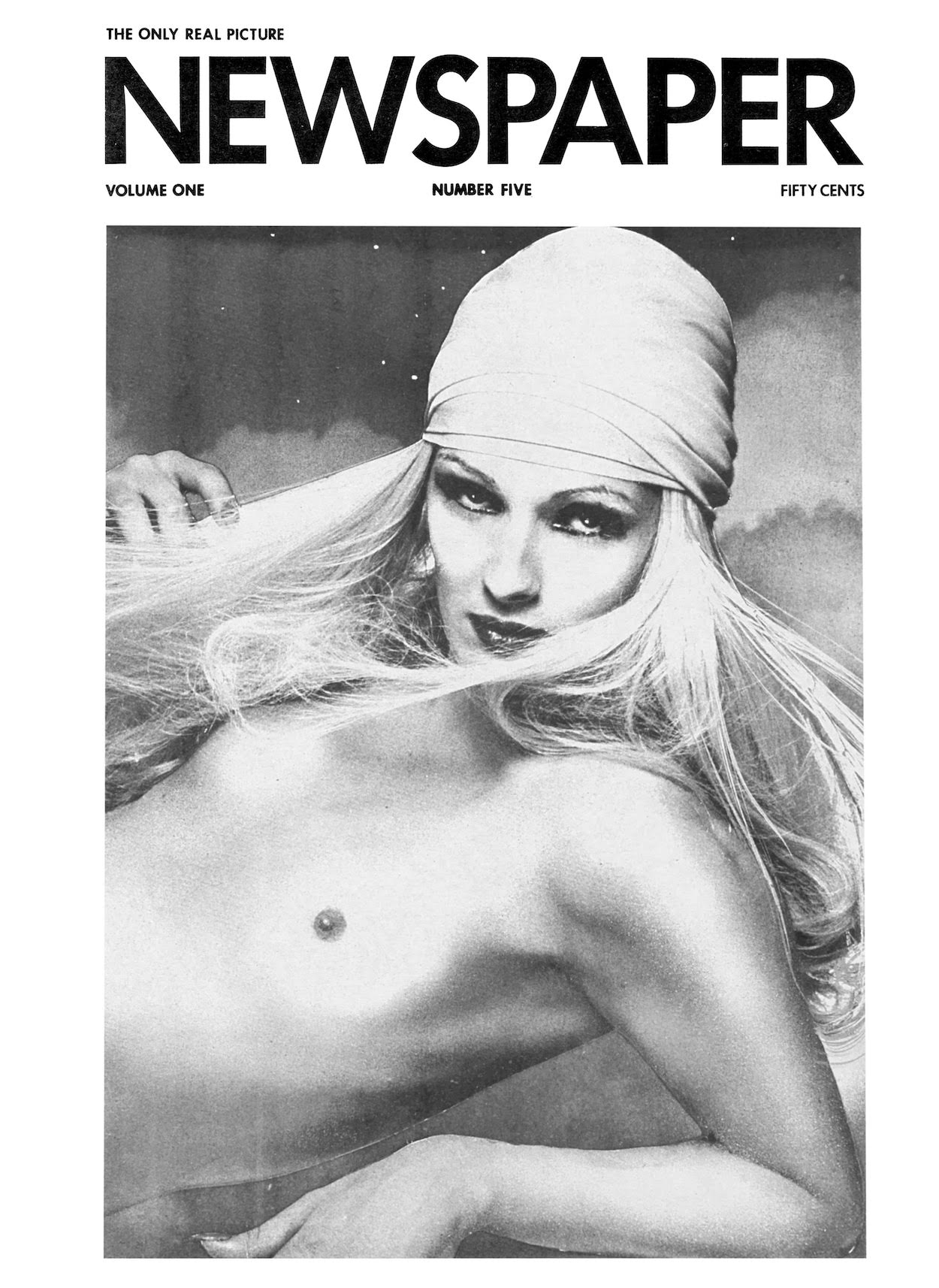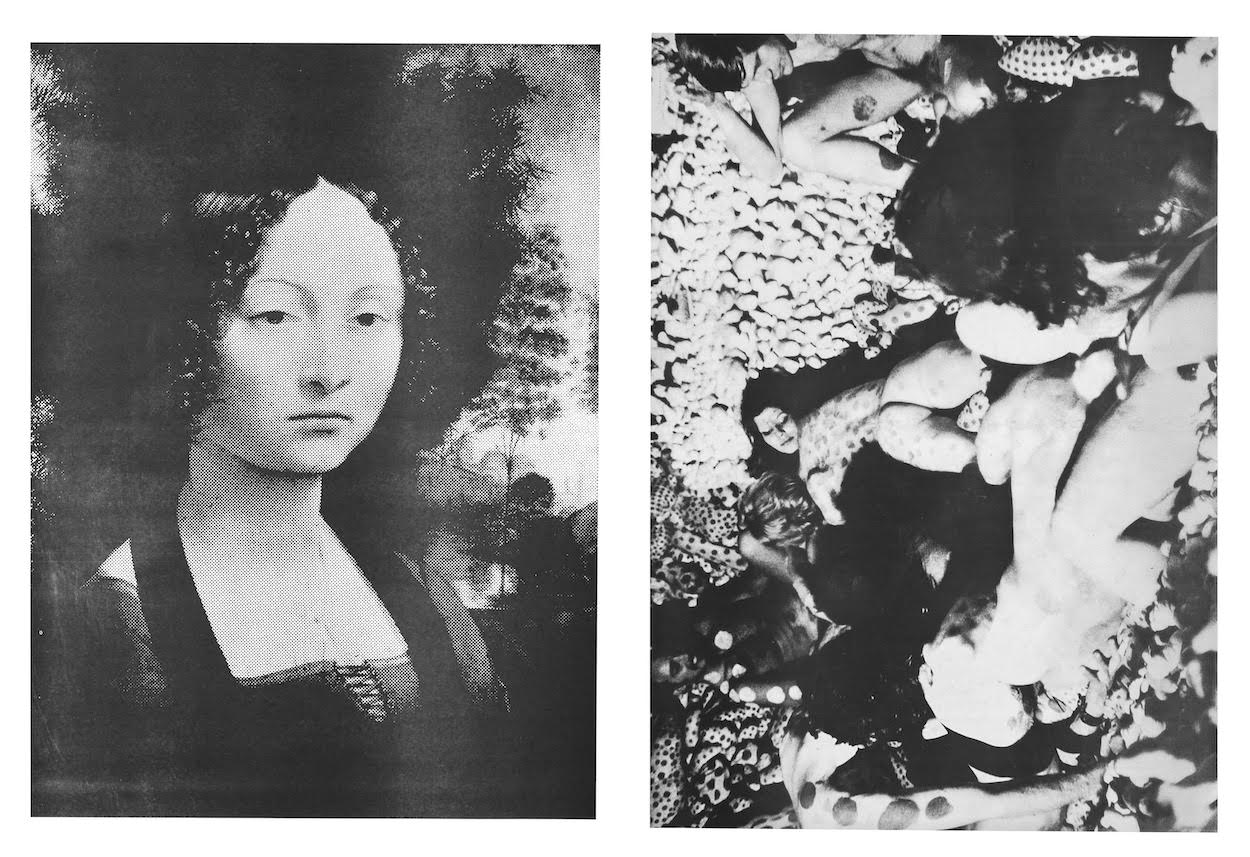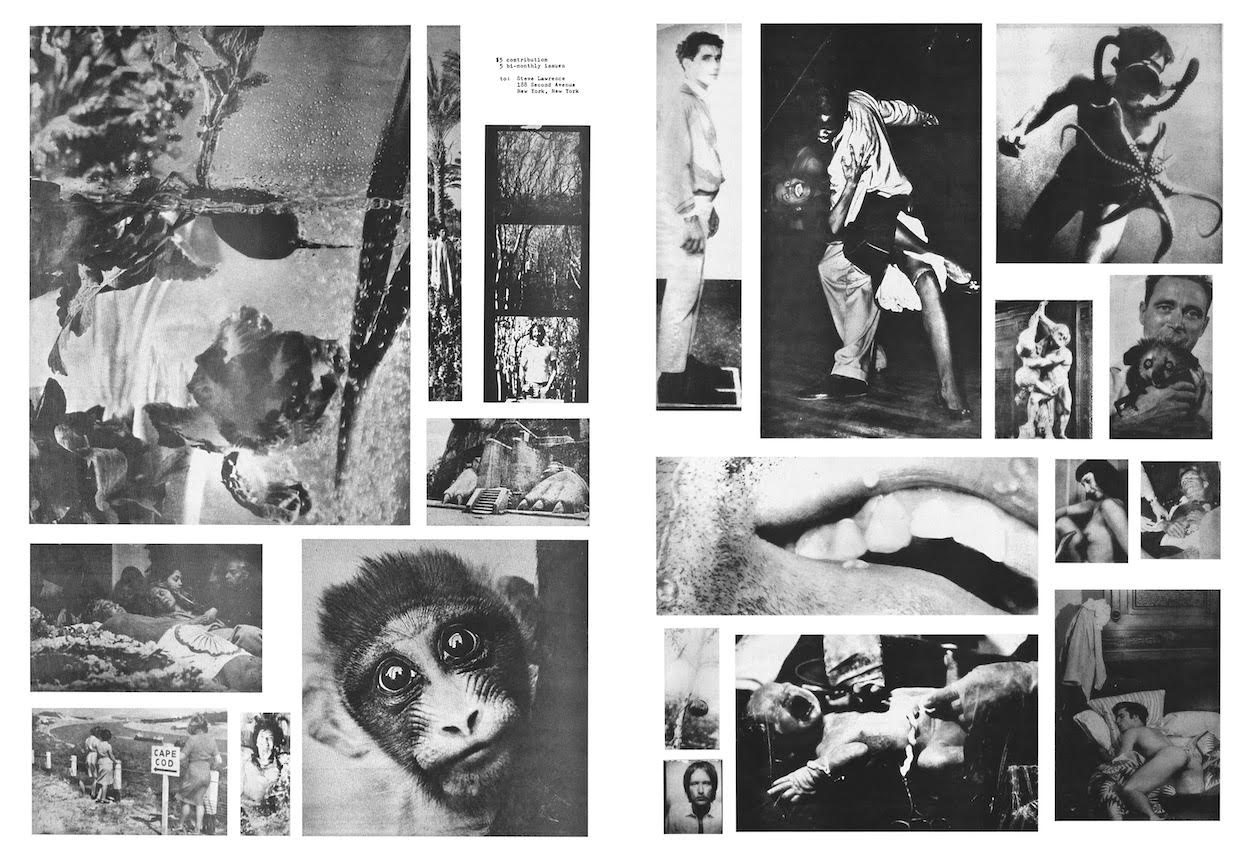While cruising Christopher Street one day in 1965, the young artist Steve Lawrence picked up the burgeoning photographer Peter Hujar. The rest is publishing history: they made names for themselves in the city’s gay and artistic circles, and in summer 1968 published a tabloid-sized collection of images without text or even a title. The paper began with a collage of women dining on penises; an “environment” or grid Lawrence assembled of sensational found images—photos of people pleasuring themselves and others, nature shots of birds and seals, gruesome documents of terror—served as centerfold.
A second untitled issue, published by Lawrence and edited with Hujar and Andrew Ullrick, arrived a few months later with a Diane Arbus photo on the cover and a chaotically groovy Yayoi Kusama scene inside, juxtaposed with a crop of a da Vinci. This was Newspaper, the underground periodical which ran for 14 issues between 1968 and 1971 and all but disappeared until 2015, when art historian Marcelo Gabriel Yáñez stumbled upon a disintegrating, incomplete pile of them in a closet while working for the music publicist and journalist Danny Fields.
Yáñez was fascinated. “It fit in with the countercultural newspapers of the time, but it was also an artist magazine, he says. “Its textlessness was rare compared to other newspapers and magazines. In many ways, it bridged a gap between artist magazine and photo book.” In its mix of high and low culture, not to mention its unabashed queer eroticism and camp approach to appropriation, Newspaper also prefigures General Idea’s FILE magazine in the 1970s and the subsequent explosion of artist and queer zines in the ensuing two decades.
Newspaper was published without page numbers or binding. “People took it apart and pinned pages to their walls,” Yáñez says. This may have been by design. The fifth issue features an iconic 1969 Richard Bernstein photograph of Candy Darling, dressed in charisma and not much else, daring the viewer to pull down their dated pin-up girls and get with the new scene. As Yáñez assembled a complete set, he found copies with pages missing or rearranged. Most issues were falling apart. “Even the few institutions that had them in special collections don’t let you see them,” he says, “because they fall apart every time you touch them.”
After years of searching, and then restoration by Rick Myers and photography by David Vu, a full accounting of Newspaper was published this spring by Primary Information, complete with Yáñez’s illuminating timeline and annotation. The volume ends with Newspaper’s final issue, entirely devoted to Peter Hujar’s astonishing photographs of the Cockettes. The chance to see these images again—of queens posing like their lives depended on it, of sainted Sylvester dreaming in bed—is almost miraculous. Really, there are no words.




